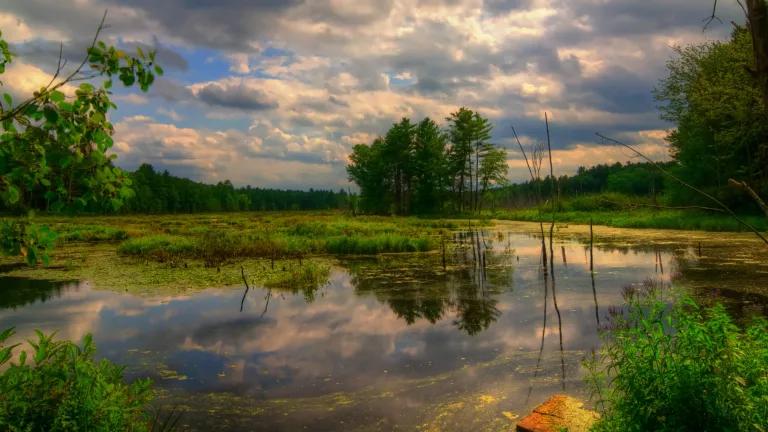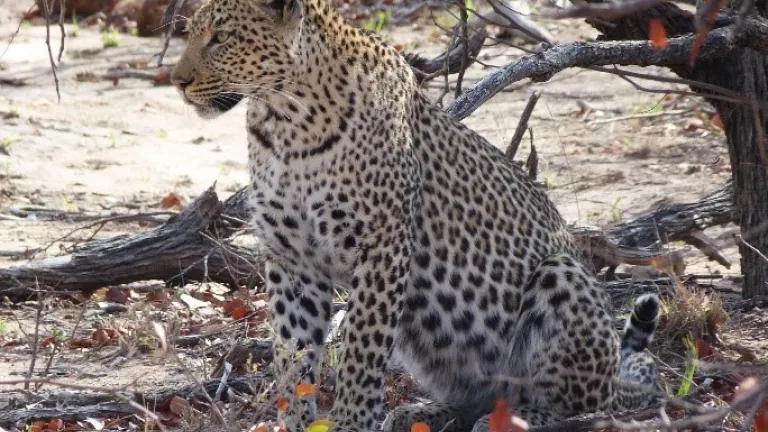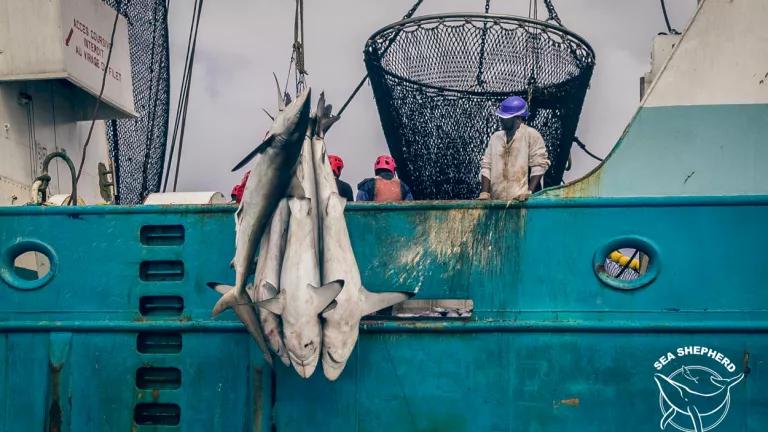World on a Precipice: Countries Meet on Biodiversity Crisis
The trajectory we’re on threatens a million species with extinction and poses an existential threat to human well-being. So they’ve got to get this right.

Puffer Pond Assabet River National Wildlife Refuge
Over the next two weeks, Parties to the UN Convention on Biological Diversity are attending a meeting to adopt a plan that will guide global biodiversity conservation for the next decade (UN Biodiversity Conference (COP15)). The Parties need to finalize a bold plan because nature is in severe decline and it’s the wealth of biodiversity we have that makes life as we know it possible. The trajectory we’re on threatens a million species with extinction and poses an existential threat to human well-being. So they’ve got to get this right, they have to adopt a plan that provides a the foundations for a new relationship with nature. The science is clear: only transformative change will secure nature and the benefits it provides for future generations, while business as usual will guarantee immense suffering and death for millions of people around the globe.
We will be able to assess whether countries are meeting the moment and putting the long-term welfare of their people ahead of short-term profits for the wealthy by looking at how they handle a few key targets and goals contained in the draft plan.
Immediately Halt Human-Caused Extinction
First, the Parties to COP15 must include in the plan, known as the Global Biodiversity Framework (GBF), a goal of halting all human-caused extinctions now. Not by 2030, not by 2050, but now. Life on the planet faces an extinction crisis. One out of every eight animal and plant species are threatened with extinction and more than 500,000 terrestrial species are already “dead species walking,” meaning they have insufficient habitat for long-term survival. Nothing would demonstrate a break with our exploitive relationship with nature than immediately choosing the existence of species over the comfort of business as usual. Scientists say only a fundamental, system-wide reorganization across technological, economic and social factors, including paradigms, goals and values will be enough to reverse nature’s dangerous decline.
Here’s what that would mean in practice.
Mexico would save the vaquita porpoise. The vaquita is the smallest of the planet’s seven porpoise species. It is found only in a very small area of the northern Gulf of California, Mexico, and its status is beyond dire. With around 10 individuals remaining, it is the most endangered cetacean on the planet. If current trends continue, it is doubtful the vaquita will survive.
The sole cause of the vaquita’s steep decline is bycatch in illegal gillnets: the presence and use of gillnets in and around the vaquita’s habitat is incompatible with their survival. Nonetheless, as detailed in numerous studies, scientific papers, and reports from on-the-water observers, the Mexican government has failed to halt the illegal use of gillnets in and around the vaquita’s habitat as required under Mexican and international law. As a result, the vaquita population has declined by 98 percent over the last twenty-five years. Mexico’s failure to halt the vaquita’s decline is entirely attributable to its unwillingness to effectively enforce and implement laws and regulations governing fishing in the upper Gulf of California. Numerous reports outline a history of inaction by various Mexican government agencies and officials that amounts to failure by design.
If Mexico committed to halting extinction now, it would fully enforce its laws and ensure that no gillnets ever make their way into vaquita habitat. This would give the vaquita—a species that was still producing healthy calves in 2021—a real chance to survive.
Investment companies would walk away from nature-negative projects like the Batang Toru Dam and expand investment in nature-positive projects. Various investment companies have been supporting the Batang Toru Dam, planned for an area in North Sumatra, Indonesia. If built, it would bifurcate the only habitat of a newly identified species of orangutan—the Tapanuli orangutan—that has fewer than 800 individuals living in the Batang Toru ecosystem. It is estimated that the orangutans today occupy just 2.5% of their historical range and remain on the edge of extinction in Batang Toru. Building the dam would permanently separate population blocks making the Tapanuli orangutan’s survival that much more difficult.
If countries committed to stopping extinction now, they would bar investment companies from participating in the Batang Toru Dam and instead incentivize investors to support building nature-positive infrastructure. And they would invest in the long-term conservation of the Tapanuli orangutan.
30x30
Second, the Parties must include in the GBF a target to meaningfully protect at least 30 percent of the world’s land, fresh water, and ocean areas by 2030 (“30x30”). The leading driver of biodiversity loss in terrestrial ecosystems is changes in land use (changes is ocean use is the second leading driver for marine ecosystems). Mostly this means taking a wild, natural area and converting it to another use, like agriculture or mining. Humanity’s had a huge impact. Seventy-five percent of global land areas have been severely altered by human activity. And more than 85 percent of wetlands have disappeared over the last 300 years.
It’s been devastating for species as wildlife populations have plummeted worldwide. And it will be devastating for humans too if the ecosystems we depend on for things like clean air and water, food security, and flood control, start to collapse because they aren’t healthy enough to function as they have for the last thousands of years. We’re only going to be able to save the natural systems we need by protecting more of the world and it’s also necessary to meet climate mitigation, adaptation, and resilience goals. 30x30 is a significant step towards that goal, but it will be meaningless if the protection isn’t strict. Again, the science tells us that we must fully and highly protect ocean areas to gain the kind of benefits we need to stabilize the natural world. Similarly, we must protect land and fresh water areas in a way that prohibits environmentally damaging activities.
Eliminate Harmful Direct Exploitation of Species
Third, the Parties must include a target focused on eliminating the leading driver of biodiversity loss in marine ecosystems (the second leading driver in terrestrial ecosystems): the direct exploitation of species. We’ve got to get serious about limiting what we take from the natural world. One third of marine fish stocks are overharvested and 60 percent are harvested at the edge of sustainability. And mega companies like Procter & Gamble are still making billions in profits by selling single-use tissue that ends up in our sewers and landfills from primary forests—forest that have never before been industrially disturbed and have irreplaceable value for the climate and species. And as we learned from COVID-19, wildlife trade can be dangerous for human health, as pandemics of zoonotic origin are directly related to increases in human and wildlife interactions, like those that occur from deforestation and the harvest of wild birds and mammals.
So, the Parties should adopt a target that eliminates all exploitation of species that is illegal, ecologically unsustainable, or poses any risk of pathogen spillover.
Close the Nature Conservation Finance Gap
The Parties must adopt a target that makes implementation of an ambitious GBF possible. Part of the reason that the biodiversity crisis is so bad is because we aren’t investing adequate resources in conserving nature and in many instances our governments are actually paying companies to destroy nature.
Thus, the Parties must include a target that mobilizes enough resources to close the biodiversity funding gap, which is at least $700 billion a year. And some of this increase in resources must include financial flows to developing countries by at least US$ 100 billion per year in the form of grants. Low-income countries simply don’t have the resources to do all of the conservation work that’s necessary, especially as they continue to be exploited by the Global North.
Transformative Change
These are the kinds of targets and goals the Parties must adopt to put the world on a the path to a new relationship with nature. And we desperately need a new relationship. Children everywhere on the planet are guaranteed a lower quality of life than the lives we’ve had. They will know a planet with less biodiversity, fewer species, intense environmental degradation, and human death and suffering unparalleled in history. In this context, anything short of a full-throated, all hands-on deck, push at COP15 is unacceptable. With these benchmarks, NRDC will be able to measure the COP15 outcomes. We’ll know if the Parties are doing what’s best for humanity or continuing to do what’s best for the profits of the global elite.



